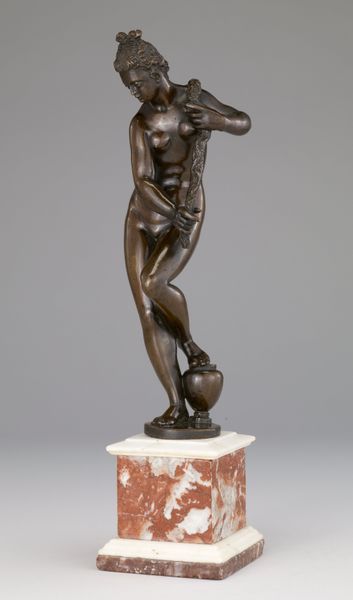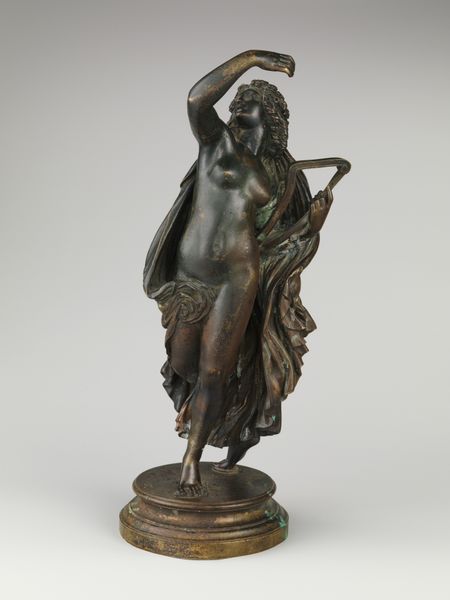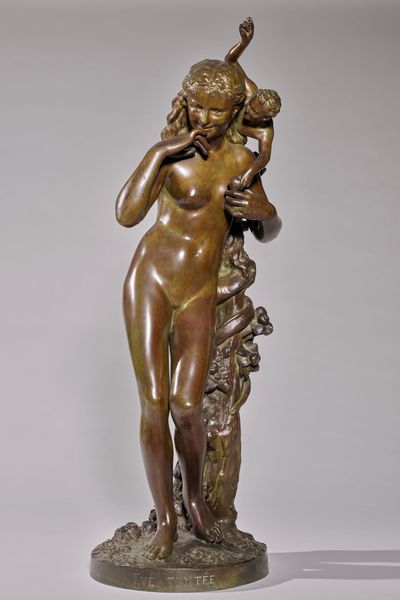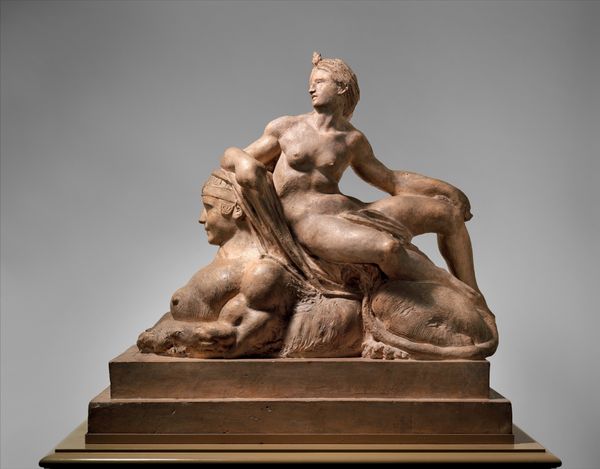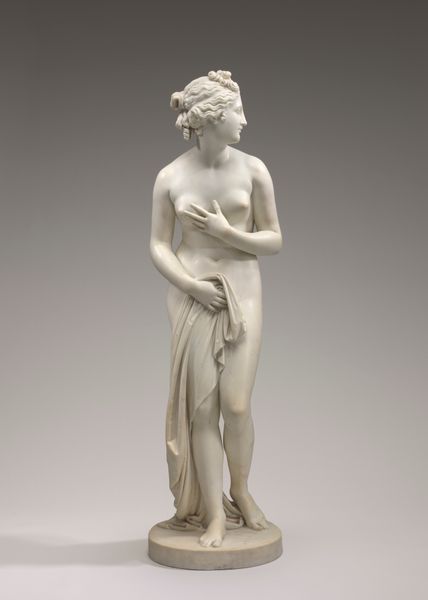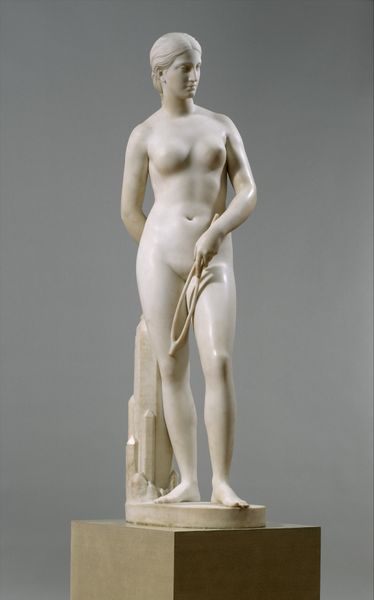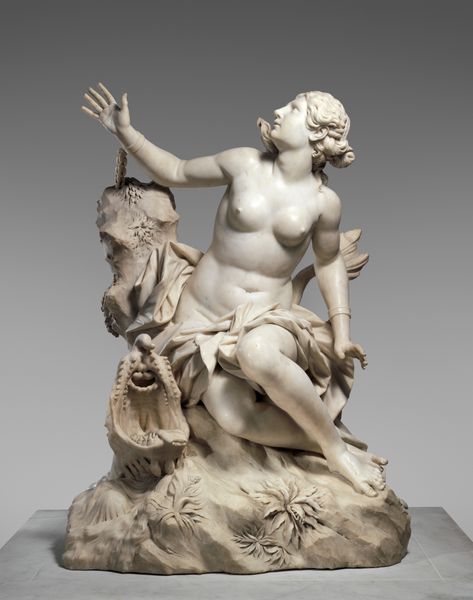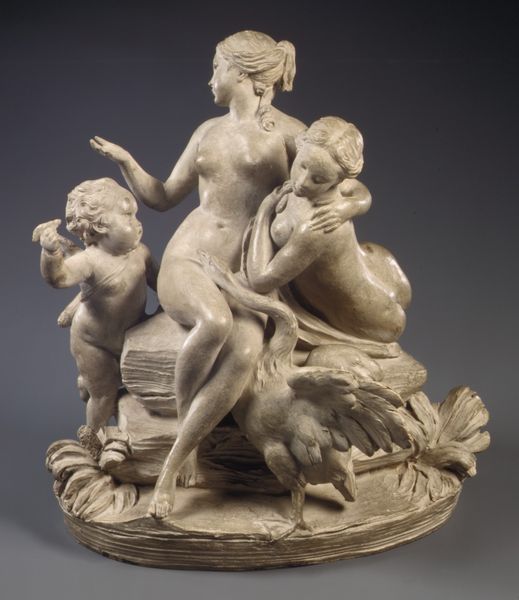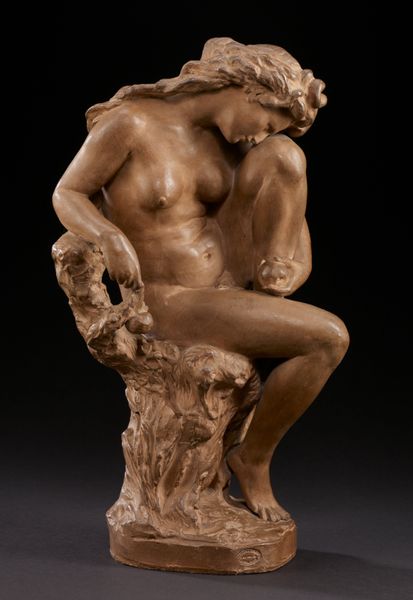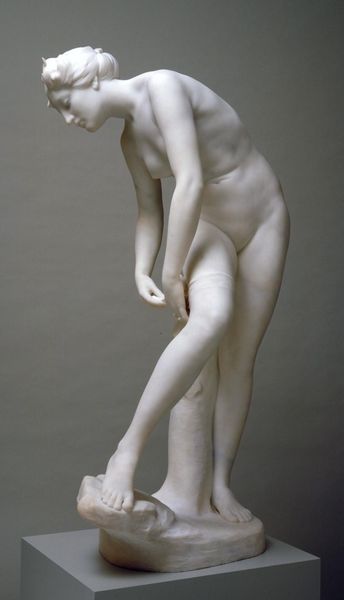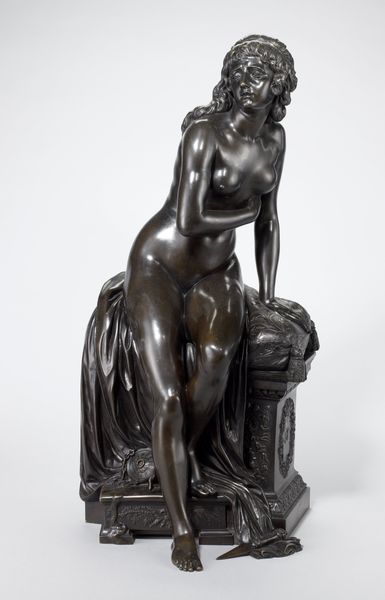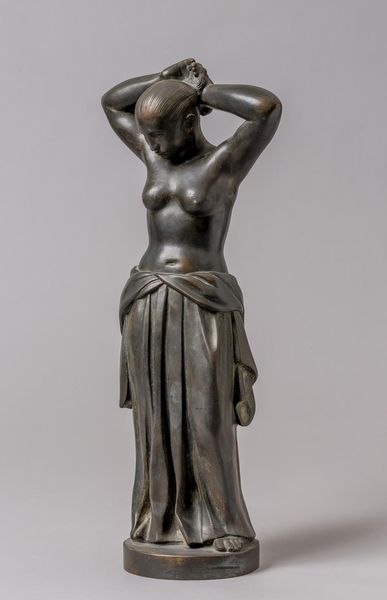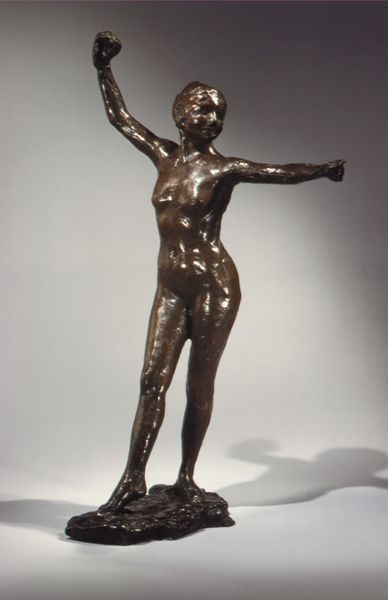
bronze, sculpture
#
statue
#
bronze
#
figuration
#
sculpture
#
nude
Copyright: Public domain
Curator: I am delighted to explore "The Three Graces," a bronze sculpture of indeterminate date, crafted by Jean-Baptiste Carpeaux. What are your initial thoughts on the piece? Editor: Well, I'm struck by the energy and movement; it's quite dynamic for a bronze statue. What can you tell me about this work? Curator: This sculpture invites us to reflect on how ideals of beauty and the female form have been constructed and presented throughout history. We must consider this artwork within its historical context – potentially the 19th century – a period marked by both admiration for classical ideals and evolving social norms around nudity and representation. Carpeaux offers us three nude figures, entangled in an intimate embrace. Consider what these poses communicate about female relationships. What meanings do you derive from the women's apparent interaction? Editor: I notice they're all different, not cookie-cutter images. They appear to be communicating with one another. Does their nudity serve a particular purpose in the artist's wider statement? Curator: That is a vital point. While classical traditions celebrated the nude form, it is key to interrogate whose bodies are valorized and how. Is the portrayal simply an aesthetic exercise, or could Carpeaux be subtly challenging societal expectations or perhaps reinforcing particular beauty standards of his time? Editor: I had not previously considered it in terms of societal values. Thank you; your knowledge is enlightening! Curator: Indeed, art becomes truly resonant when we connect it to the intricate webs of culture and history. It shows how crucial intersectional approaches are when studying art history. Editor: I'll keep that in mind! Thank you!
Comments
No comments
Be the first to comment and join the conversation on the ultimate creative platform.
